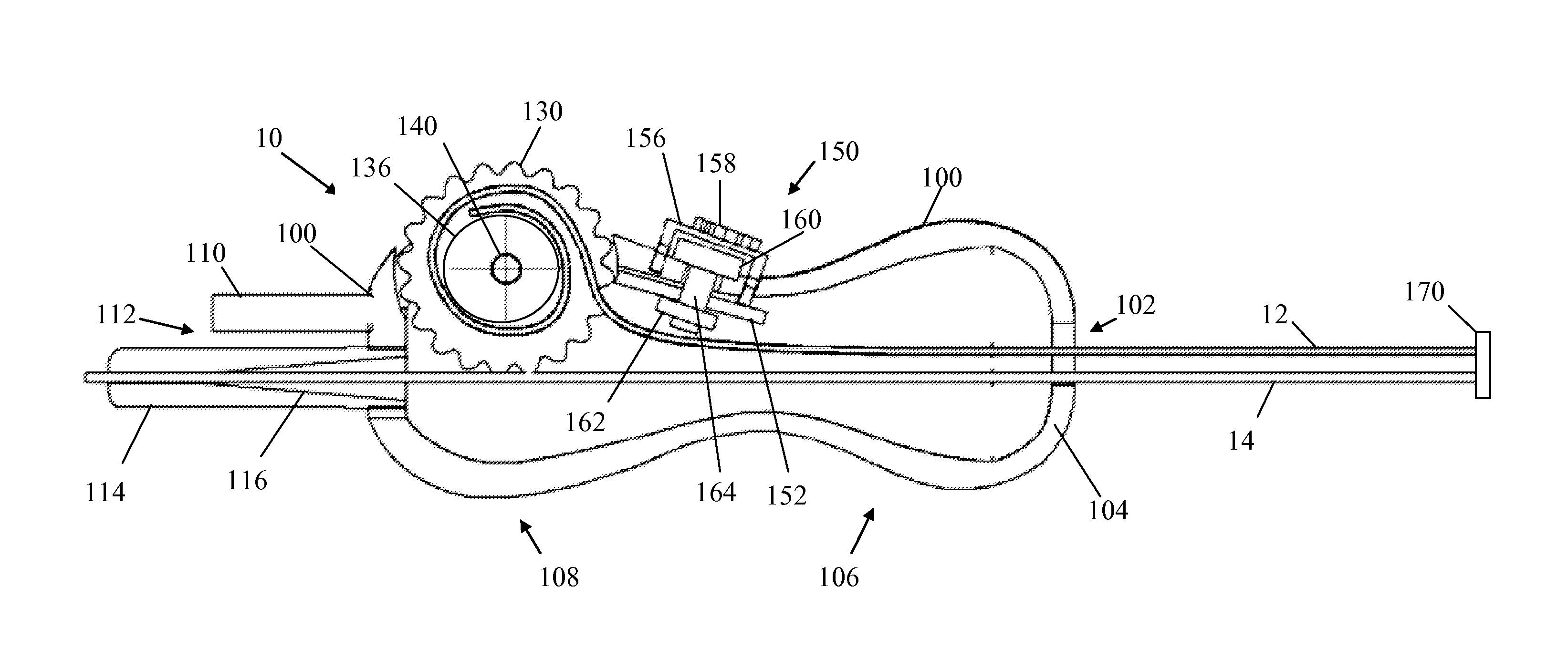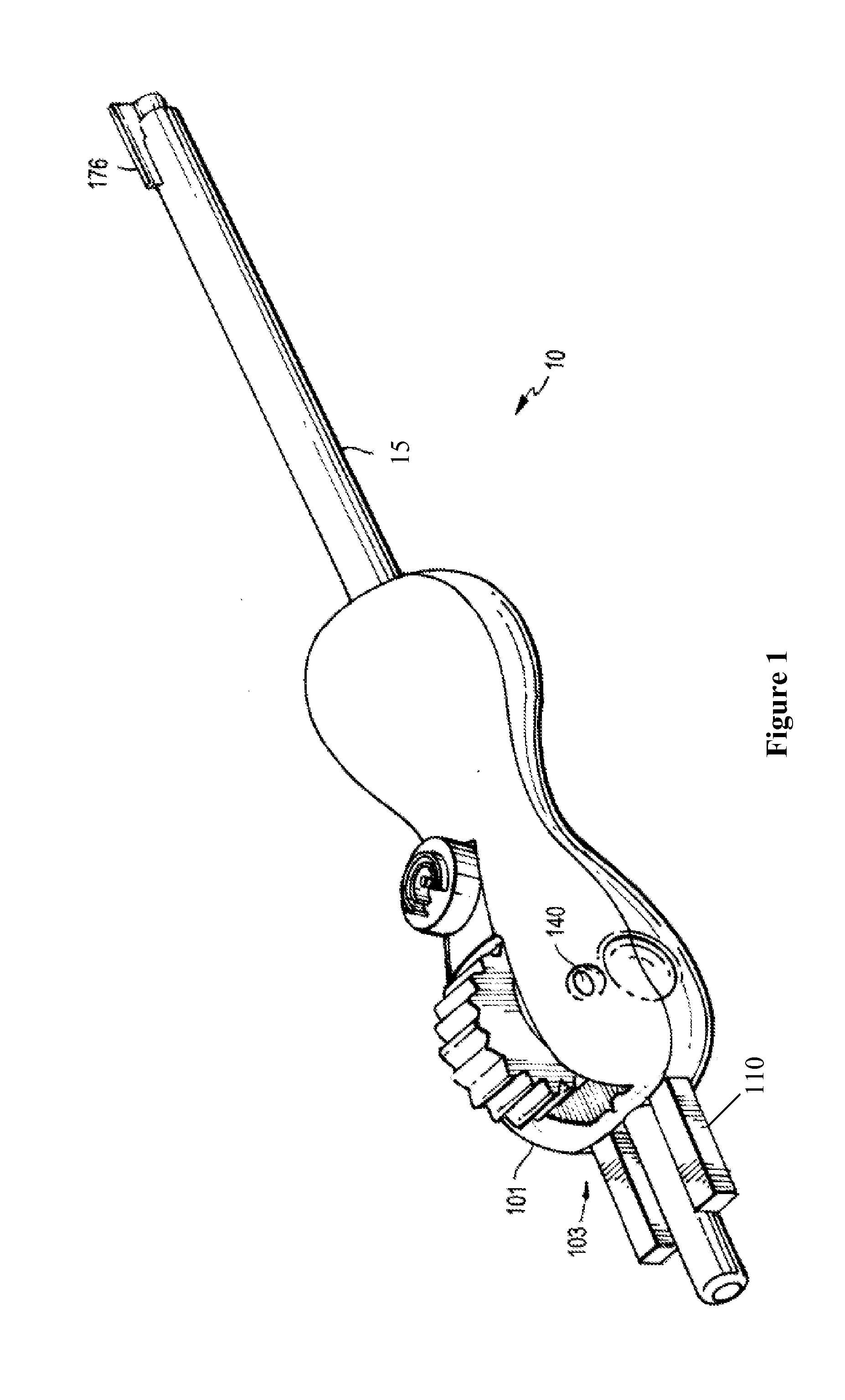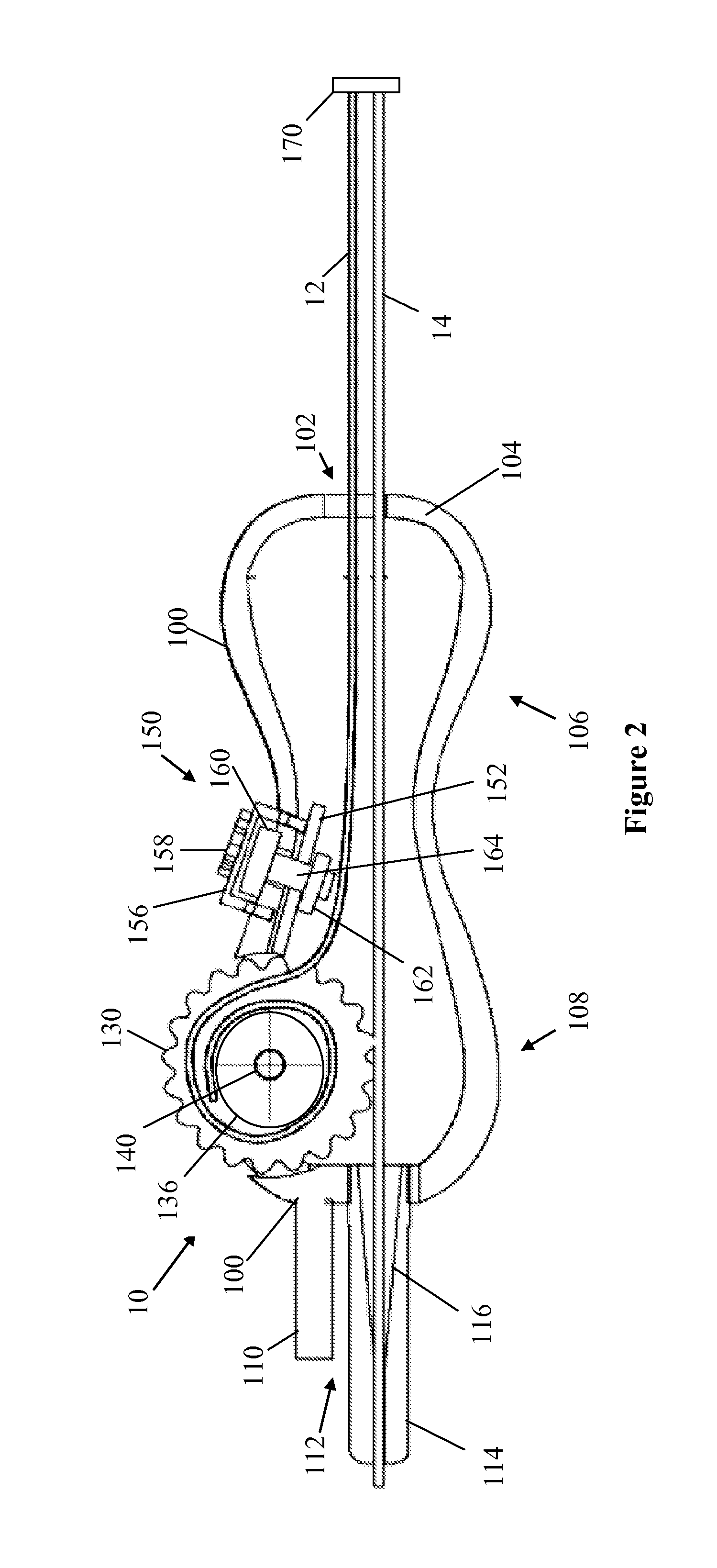Catheter placement device
a catheter and catheter technology, applied in the field of catheter placement devices, can solve the problems of catheters being placed incorrectly, catheters themselves cannot be visualized, and the possibility of misplacement of guide wires, etc., and achieve the effect of reliable and convenient use and convenient us
- Summary
- Abstract
- Description
- Claims
- Application Information
AI Technical Summary
Benefits of technology
Problems solved by technology
Method used
Image
Examples
Embodiment Construction
[0047]In describing a preferred embodiment of the invention illustrated in the drawings, specific terminology will be resorted to for the sake of clarity. However, the invention is not intended to be limited to the specific terms so selected, and it is to be understood that each specific term includes all technical equivalents that operate in similar manner to accomplish a similar purpose. Several preferred embodiments of the invention are described for illustrative purposes, it being understood that the invention may be embodied in other forms not specifically shown in the drawings.
[0048]This catheter has several features which will improve medical treatment. With these added features, the catheter makes IV placement with ultrasound easier, more efficient, and more accurate, thus significantly decreasing pain experienced by the patient by reducing the number of IV sticks currently performed.
[0049]As shown in the drawings the invention comprises of multiple elements that have separa...
PUM
 Login to View More
Login to View More Abstract
Description
Claims
Application Information
 Login to View More
Login to View More - R&D
- Intellectual Property
- Life Sciences
- Materials
- Tech Scout
- Unparalleled Data Quality
- Higher Quality Content
- 60% Fewer Hallucinations
Browse by: Latest US Patents, China's latest patents, Technical Efficacy Thesaurus, Application Domain, Technology Topic, Popular Technical Reports.
© 2025 PatSnap. All rights reserved.Legal|Privacy policy|Modern Slavery Act Transparency Statement|Sitemap|About US| Contact US: help@patsnap.com



